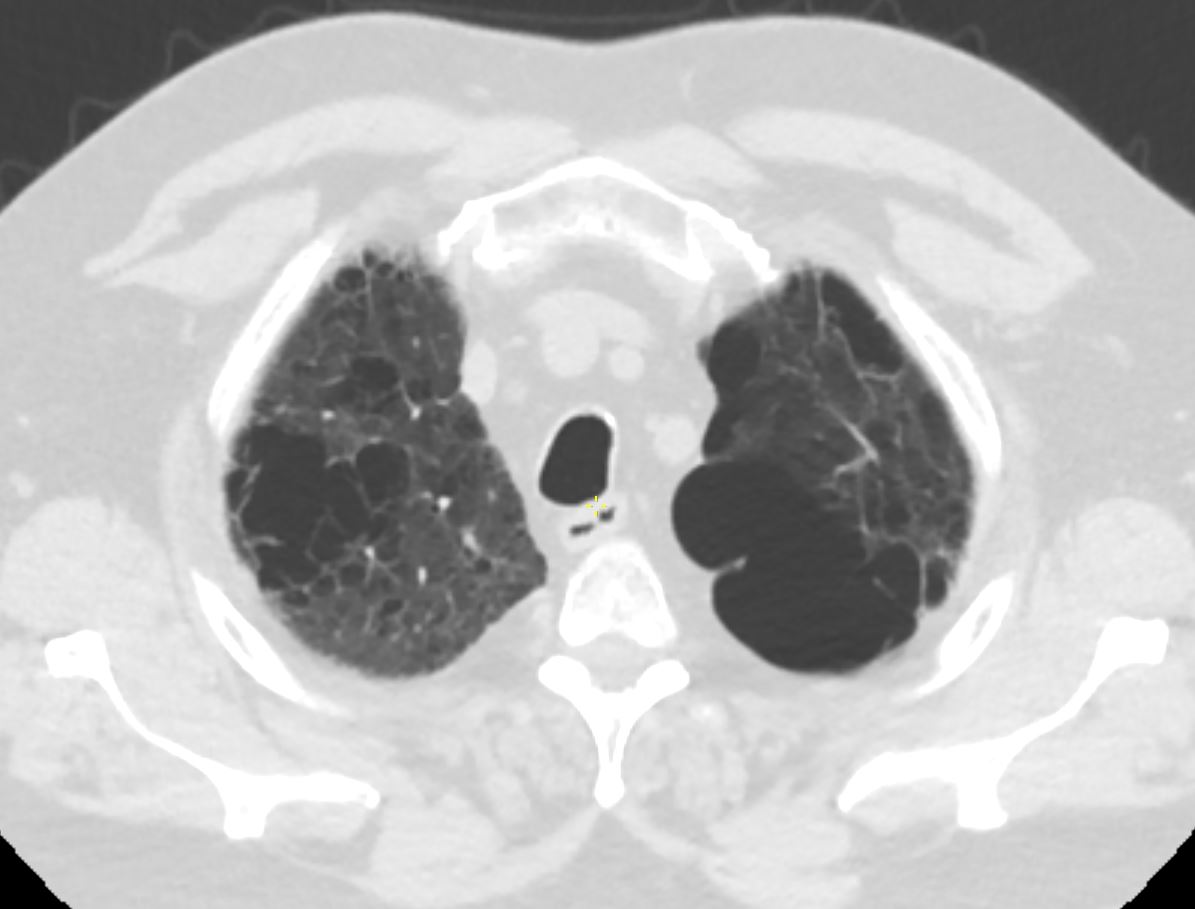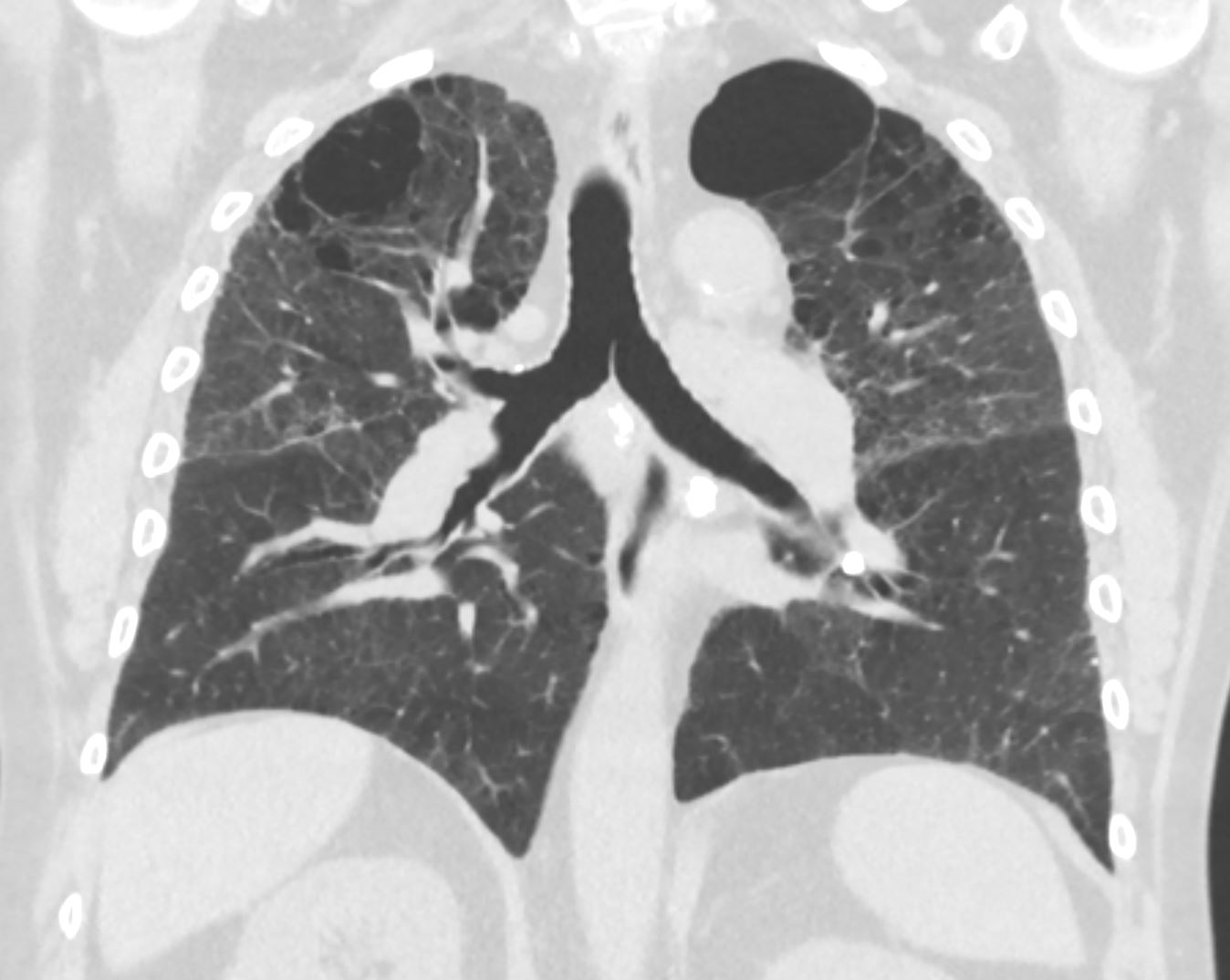Bullous emphysema is a type of chronic obstructive pulmonary
disease characterized by the formation of large air-filled spaces,
known as bullae, within the lung tissue. These bullae arise from the
destruction of alveolar walls and coalesce into large spaces that
can occupy significant portions of the lung. The pathogenesis
involves chronic inflammation, often due to smoking or
environmental exposure, leading to the breakdown of elastic lung
tissue. As a result, individuals with bullous emphysema experience
symptoms such as shortness of breath, reduced exercise tolerance,
and an increased risk of pneumothorax (collapsed lung) if a bulla
ruptures. Diagnosis is confirmed through imaging, with chest X-rays
or CT scans showing enlarged air spaces devoid of lung markings (Etesami)

CT scan in the axial plane of a 64- year-old man with emphysema shows bilateral apical bullous lung disease,
Ashley Davidoff MD TheCommonVein.Net 136440

CT scan in the coronal plane of a 64- year-old man with emphysema shows bilateral apical bullous lung disease, magnified in the lower image
Ashley Davidoff MD TheCommonVein.Net 136439c

CT scan in the coronal plane of a 64- year-old man with emphysema shows bilateral apical bullous lung disease
Ashley Davidoff MD TheCommonVein.net 136439
